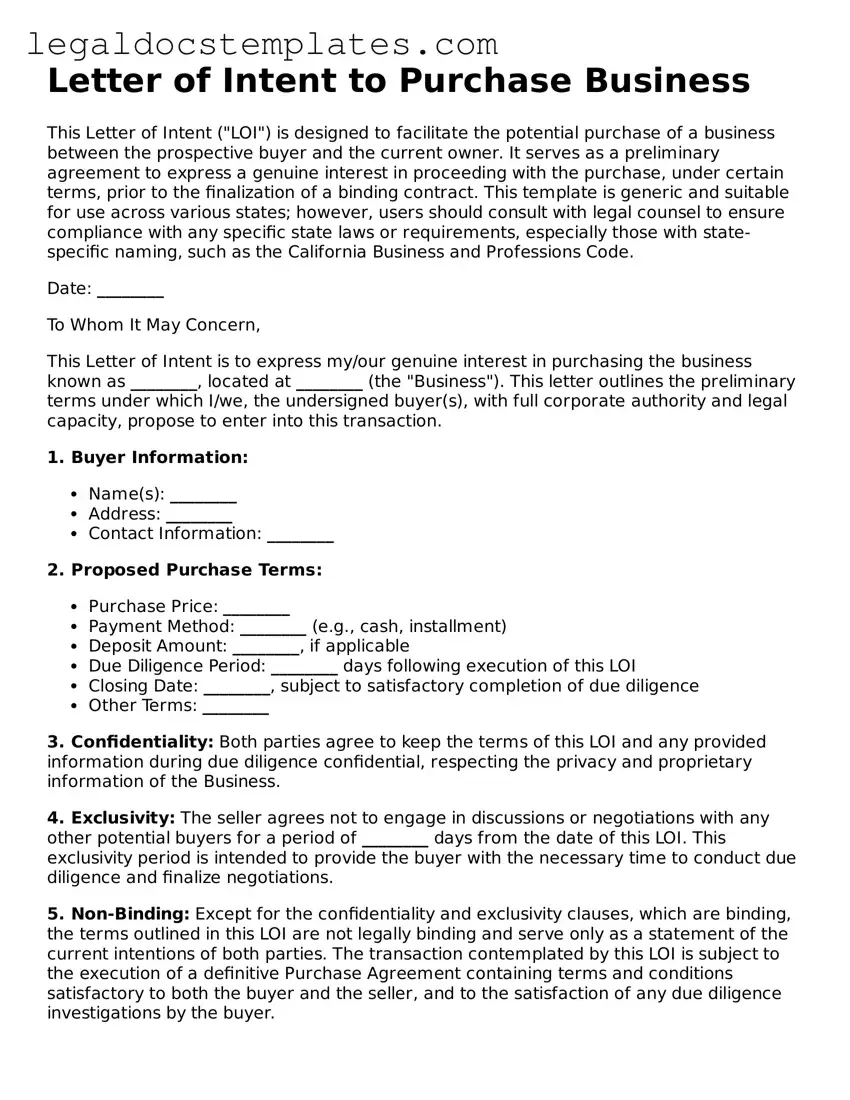Letter of Intent to Purchase Business
This Letter of Intent ("LOI") is designed to facilitate the potential purchase of a business between the prospective buyer and the current owner. It serves as a preliminary agreement to express a genuine interest in proceeding with the purchase, under certain terms, prior to the finalization of a binding contract. This template is generic and suitable for use across various states; however, users should consult with legal counsel to ensure compliance with any specific state laws or requirements, especially those with state-specific naming, such as the California Business and Professions Code.
Date: ________
To Whom It May Concern,
This Letter of Intent is to express my/our genuine interest in purchasing the business known as ________, located at ________ (the "Business"). This letter outlines the preliminary terms under which I/we, the undersigned buyer(s), with full corporate authority and legal capacity, propose to enter into this transaction.
1. Buyer Information:
- Name(s): ________
- Address: ________
- Contact Information: ________
2. Proposed Purchase Terms:
- Purchase Price: ________
- Payment Method: ________ (e.g., cash, installment)
- Deposit Amount: ________, if applicable
- Due Diligence Period: ________ days following execution of this LOI
- Closing Date: ________, subject to satisfactory completion of due diligence
- Other Terms: ________
3. Confidentiality: Both parties agree to keep the terms of this LOI and any provided information during due diligence confidential, respecting the privacy and proprietary information of the Business.
4. Exclusivity: The seller agrees not to engage in discussions or negotiations with any other potential buyers for a period of ________ days from the date of this LOI. This exclusivity period is intended to provide the buyer with the necessary time to conduct due diligence and finalize negotiations.
5. Non-Binding: Except for the confidentiality and exclusivity clauses, which are binding, the terms outlined in this LOI are not legally binding and serve only as a statement of the current intentions of both parties. The transaction contemplated by this LOI is subject to the execution of a definitive Purchase Agreement containing terms and conditions satisfactory to both the buyer and the seller, and to the satisfaction of any due diligence investigations by the buyer.
I/We look forward to moving forward with this transaction and anticipate executing a formal Purchase Agreement promptly following the completion of due diligence to the mutual satisfaction of both parties.
Sincerely,
______________________
Name: ________
Title: ________ (if applicable)
Date: ________
